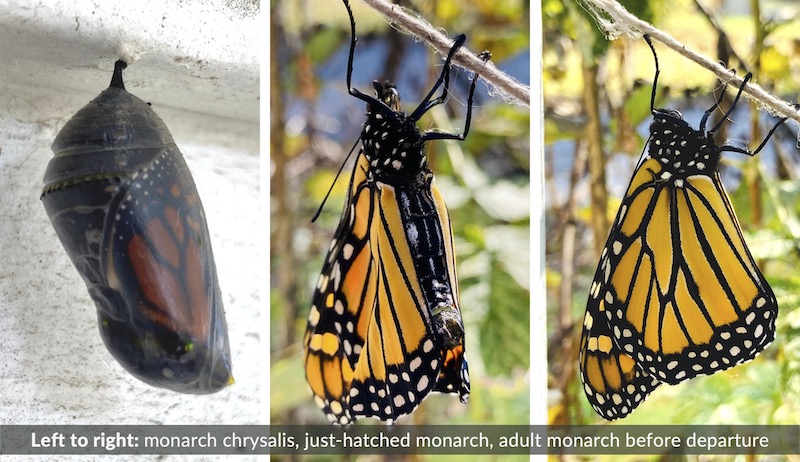
You may have heard conflicting reports about the status of the beloved monarch butterfly this year. Some news agencies have noted that the monarch is now officially endangered. Others have suggested that things are looking up for the beleaguered butterfly.
No matter which agencies weigh in, the truth of the matter is that monarch butterflies do need our help. And, fortunately, there’s a lot we can do to make a difference for them.
One of the single most impactful actions we can take? Planting milkweed species that are native to our specific areas.
Endangered or Not?
For its part, the U.S. Fish and Wildlife Service has yet to officially list the monarch under the Endangered Species Act, noting that, although such action may be warranted, it is “precluded at this time by higher priority listing actions.” And so, the monarch is a candidate for listing but simply remains under review annually “until we are able to begin developing a proposal to list the monarch.”
However, in July of 2022, the International Union for Conservation of Nature (IUCN) did classify the monarch butterfly as “endangered” via the IUCN “Red List of Threatened Species.”
According to an IUCN news release, “Legal and illegal logging and deforestation to make space for agriculture and urban development has already destroyed substantial areas of the butterflies’ winter shelter in Mexico and California, while pesticides and herbicides used in intensive agriculture across the range kill butterflies and milkweed, the host plant that the larvae of the monarch butterfly feed on.”

If You Plant It…
Butterfly gardeners have long understood how important it is to provide rich sources of nectar to fuel up adult butterflies in general. But female butterflies also need host plants on which to lay their eggs.
The caterpillars that subsequently hatch out from these eggs devour their host plants in order to complete their next life stages.
When it comes to the monarch butterfly, in particular, the host plant must be milkweed. Ideally, if you are able to grow a thick stand of native milkweed, monarch butterflies will have an easier time finding it. And the sooner your plants are ready in the spring, the better off any early monarchs passing through will be.
Interestingly, where I am located in Indiana, I didn’t notice many monarchs until much later this season. But, as late as October 14th, I had a bright green monarch butterfly chrysalis stuck to the side of my house of all places! It remained there all the way through Halloween. But, on November 1st, a healthy monarch finally emerged. Once its wings were ready and dried, it took off for warmer locales.
Read more: You can learn how to responsibly raise monarch butterflies.
Choose Wisely
There is one type of milkweed you shouldn’t plant, since it can actually end up setting monarch butterflies back. Tropical milkweed (Asclepias curassavica) is not native to Canada or the U.S. Especially when grown in the southern parts of the U.S., tropical milkweed can contribute to the spread of a monarch parasite that has decimated monarch populations over the last couple of decades.
Instead, look for one of the many native milkweed varieties that will perform best in your growing conditions and climate. (If you’re not sure where to start, try the Xerces Society’s Milkweed Finder Tool.)

Start Now
Once you do have milkweed seeds in hand, you’ll need to make sure they have a period of cold stratification. Without this critical step, your germination rates will be very poor.
Many gardeners choose to plant seeds in moist growing medium and then refrigerate this for several weeks. But there is a much simpler way to have success with milkweed. To start, you’ll need some empty, clear plastic bottles, a permanent marker and a utility knife.
First, mark a straight line across the bottom half inch of your plastic bottle and carefully cut this part away. You should be left with a clear plant cloche.

Next—provided you know where you want to plant your milkweed and the soil is still somewhat workable—simply scratch up the ground, plant the seeds and water in well. Cover the seeds you planted with the cloches you made.
(You may want to use landscaping pins to secure them to the ground.)
These cloches will protect and keep your planted seeds in place while they go through Mother Nature’s cold spells. Once the danger of frost has passed in the spring, you can remove the cloches.
In the spring, these seeds should enjoy much higher germination rates than they otherwise might. You’ll also have the earliest possible start for the season’s milkweed plants.




